Comprehensive Finance Report: Business and Accounting Analysis
VerifiedAdded on 2020/02/23
|19
|2252
|61
Report
AI Summary
This report delves into the core concepts of business and accounting finance, presenting a comprehensive analysis of various financial aspects. It begins by defining key terms like accumulated depreciation and capitalization, followed by an exploration of inventory methods such as FIFO, LIFO, and weighted average, with illustrative examples. The report then analyzes financial statements including income statements and balance sheets, demonstrating the impact of different inventory methods on financial metrics. It further examines major financial reports and their purposes, emphasizing the importance of profits and cash flow, along with ethical considerations. Ratio analysis is conducted to compare financial performance, including rate of return and current ratio, using charts and calculations. The report concludes with business report elements for decision-making, touching upon digital dashboards and impression management in accounting, providing a well-rounded view of financial analysis and its practical applications.
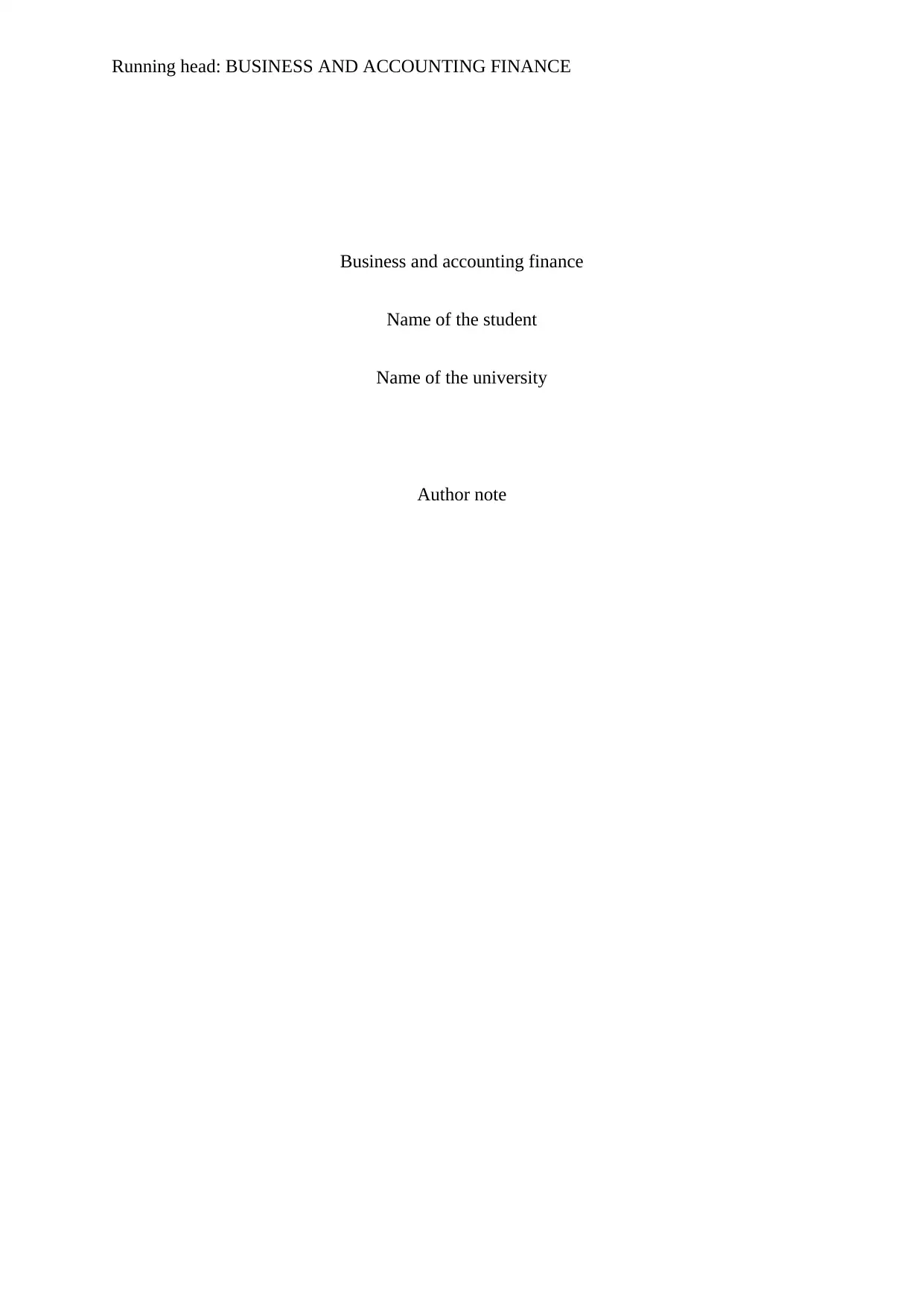
Running head: BUSINESS AND ACCOUNTING FINANCE
Business and accounting finance
Name of the student
Name of the university
Author note
Business and accounting finance
Name of the student
Name of the university
Author note
Paraphrase This Document
Need a fresh take? Get an instant paraphrase of this document with our AI Paraphraser
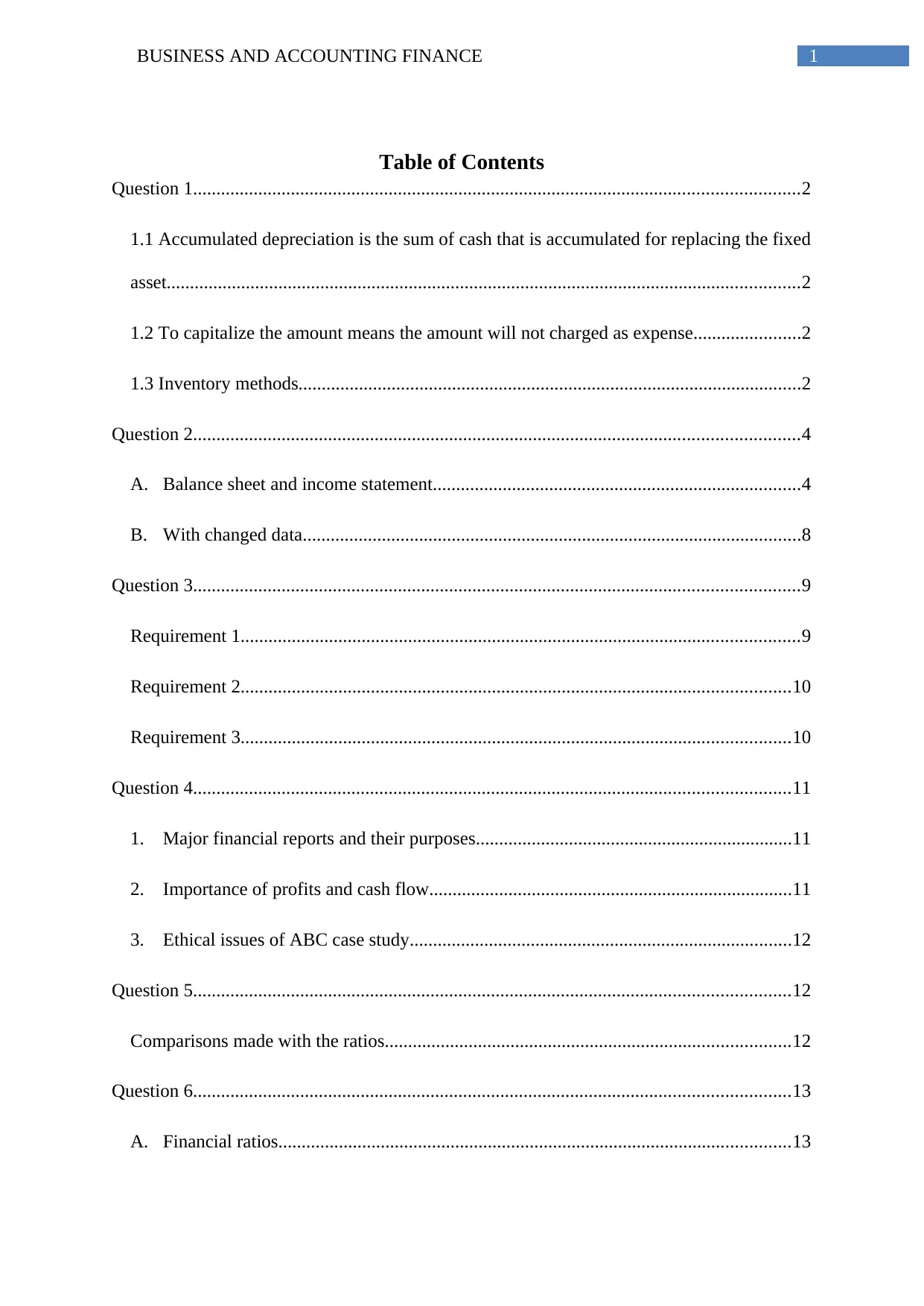
1BUSINESS AND ACCOUNTING FINANCE
Table of Contents
Question 1..................................................................................................................................2
1.1 Accumulated depreciation is the sum of cash that is accumulated for replacing the fixed
asset........................................................................................................................................2
1.2 To capitalize the amount means the amount will not charged as expense.......................2
1.3 Inventory methods............................................................................................................2
Question 2..................................................................................................................................4
A. Balance sheet and income statement...............................................................................4
B. With changed data...........................................................................................................8
Question 3..................................................................................................................................9
Requirement 1........................................................................................................................9
Requirement 2......................................................................................................................10
Requirement 3......................................................................................................................10
Question 4................................................................................................................................11
1. Major financial reports and their purposes....................................................................11
2. Importance of profits and cash flow..............................................................................11
3. Ethical issues of ABC case study..................................................................................12
Question 5................................................................................................................................12
Comparisons made with the ratios.......................................................................................12
Question 6................................................................................................................................13
A. Financial ratios..............................................................................................................13
Table of Contents
Question 1..................................................................................................................................2
1.1 Accumulated depreciation is the sum of cash that is accumulated for replacing the fixed
asset........................................................................................................................................2
1.2 To capitalize the amount means the amount will not charged as expense.......................2
1.3 Inventory methods............................................................................................................2
Question 2..................................................................................................................................4
A. Balance sheet and income statement...............................................................................4
B. With changed data...........................................................................................................8
Question 3..................................................................................................................................9
Requirement 1........................................................................................................................9
Requirement 2......................................................................................................................10
Requirement 3......................................................................................................................10
Question 4................................................................................................................................11
1. Major financial reports and their purposes....................................................................11
2. Importance of profits and cash flow..............................................................................11
3. Ethical issues of ABC case study..................................................................................12
Question 5................................................................................................................................12
Comparisons made with the ratios.......................................................................................12
Question 6................................................................................................................................13
A. Financial ratios..............................................................................................................13
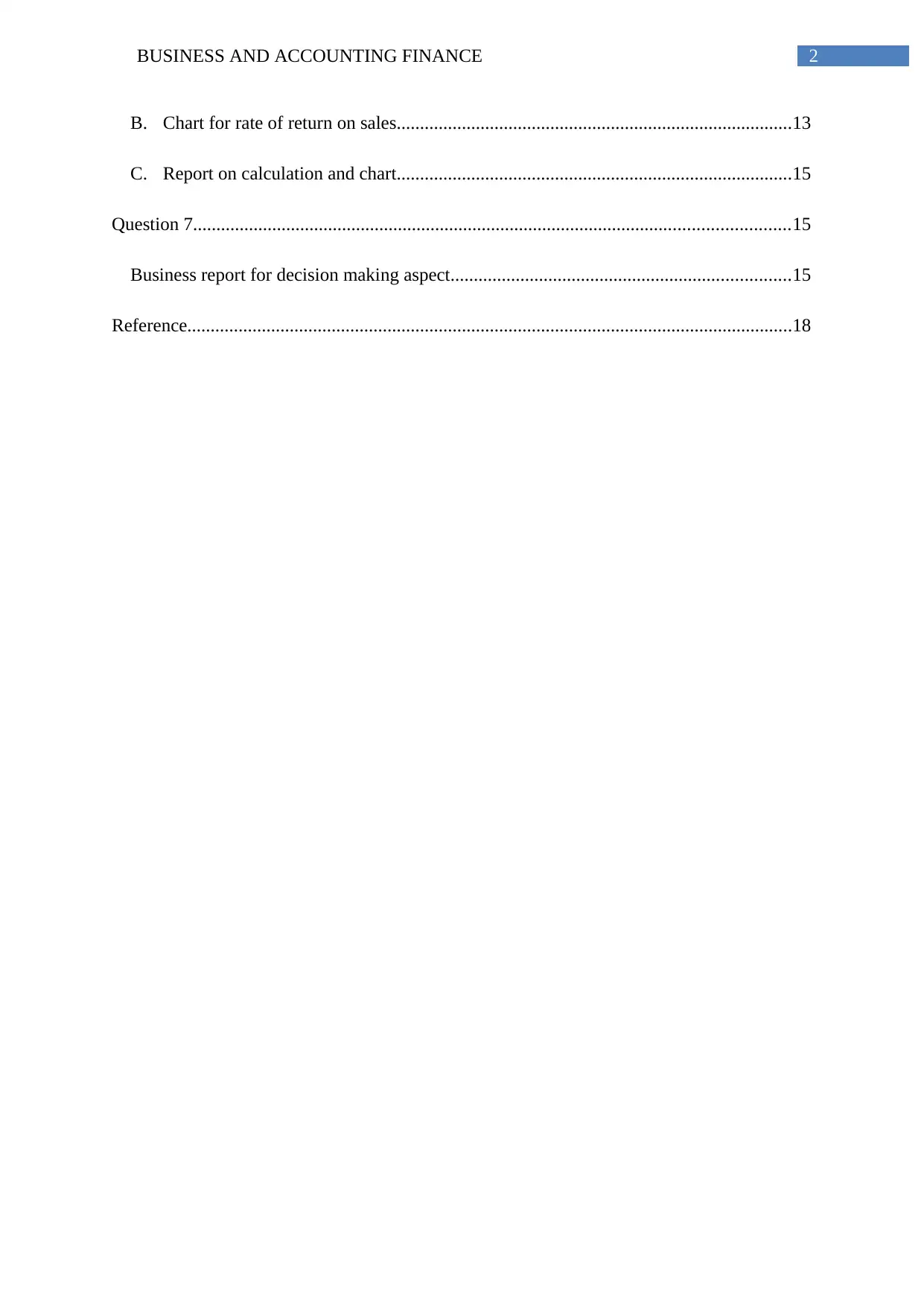
2BUSINESS AND ACCOUNTING FINANCE
B. Chart for rate of return on sales.....................................................................................13
C. Report on calculation and chart.....................................................................................15
Question 7................................................................................................................................15
Business report for decision making aspect.........................................................................15
Reference..................................................................................................................................18
B. Chart for rate of return on sales.....................................................................................13
C. Report on calculation and chart.....................................................................................15
Question 7................................................................................................................................15
Business report for decision making aspect.........................................................................15
Reference..................................................................................................................................18
⊘ This is a preview!⊘
Do you want full access?
Subscribe today to unlock all pages.

Trusted by 1+ million students worldwide
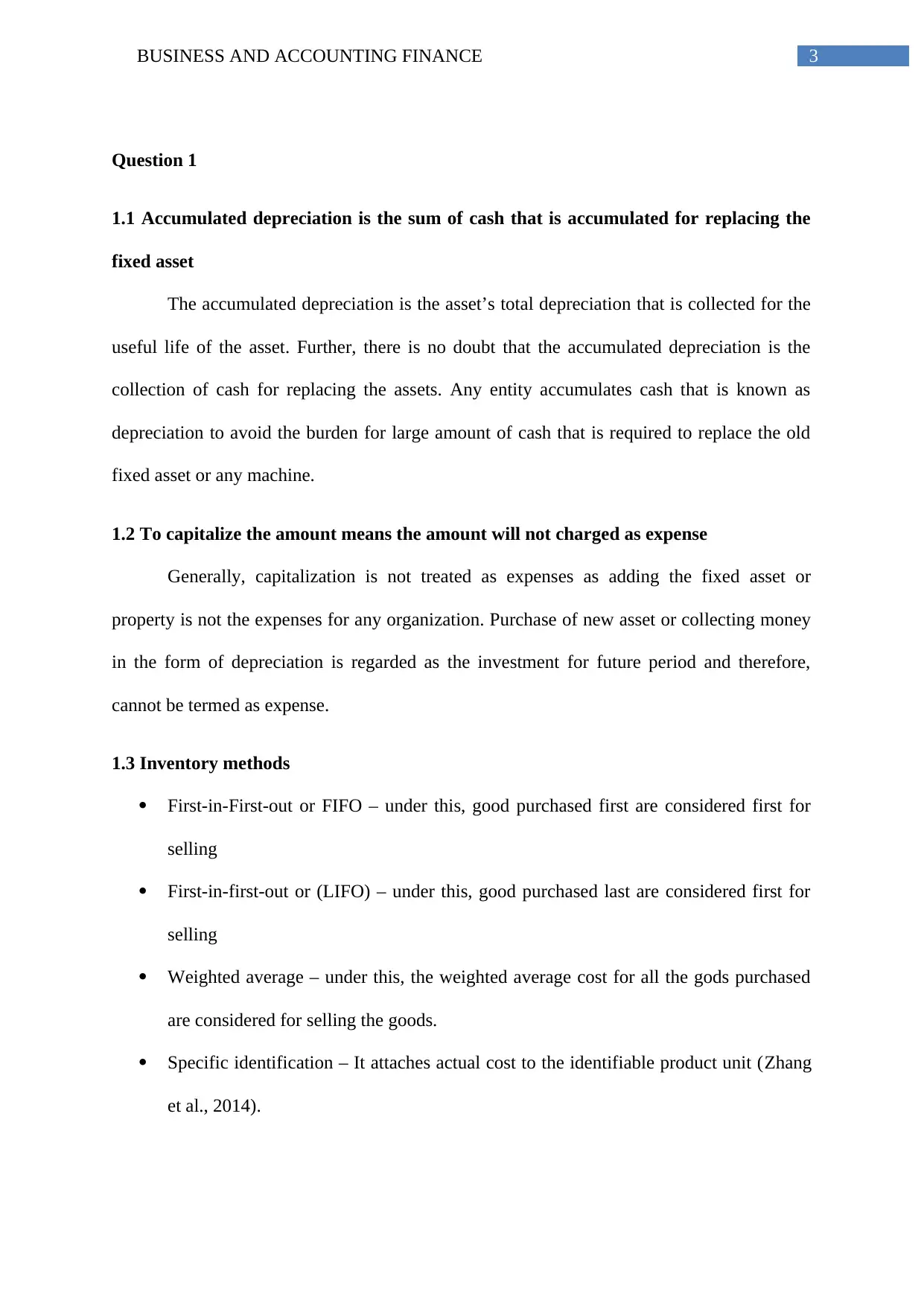
3BUSINESS AND ACCOUNTING FINANCE
Question 1
1.1 Accumulated depreciation is the sum of cash that is accumulated for replacing the
fixed asset
The accumulated depreciation is the asset’s total depreciation that is collected for the
useful life of the asset. Further, there is no doubt that the accumulated depreciation is the
collection of cash for replacing the assets. Any entity accumulates cash that is known as
depreciation to avoid the burden for large amount of cash that is required to replace the old
fixed asset or any machine.
1.2 To capitalize the amount means the amount will not charged as expense
Generally, capitalization is not treated as expenses as adding the fixed asset or
property is not the expenses for any organization. Purchase of new asset or collecting money
in the form of depreciation is regarded as the investment for future period and therefore,
cannot be termed as expense.
1.3 Inventory methods
First-in-First-out or FIFO – under this, good purchased first are considered first for
selling
First-in-first-out or (LIFO) – under this, good purchased last are considered first for
selling
Weighted average – under this, the weighted average cost for all the gods purchased
are considered for selling the goods.
Specific identification – It attaches actual cost to the identifiable product unit (Zhang
et al., 2014).
Question 1
1.1 Accumulated depreciation is the sum of cash that is accumulated for replacing the
fixed asset
The accumulated depreciation is the asset’s total depreciation that is collected for the
useful life of the asset. Further, there is no doubt that the accumulated depreciation is the
collection of cash for replacing the assets. Any entity accumulates cash that is known as
depreciation to avoid the burden for large amount of cash that is required to replace the old
fixed asset or any machine.
1.2 To capitalize the amount means the amount will not charged as expense
Generally, capitalization is not treated as expenses as adding the fixed asset or
property is not the expenses for any organization. Purchase of new asset or collecting money
in the form of depreciation is regarded as the investment for future period and therefore,
cannot be termed as expense.
1.3 Inventory methods
First-in-First-out or FIFO – under this, good purchased first are considered first for
selling
First-in-first-out or (LIFO) – under this, good purchased last are considered first for
selling
Weighted average – under this, the weighted average cost for all the gods purchased
are considered for selling the goods.
Specific identification – It attaches actual cost to the identifiable product unit (Zhang
et al., 2014).
Paraphrase This Document
Need a fresh take? Get an instant paraphrase of this document with our AI Paraphraser
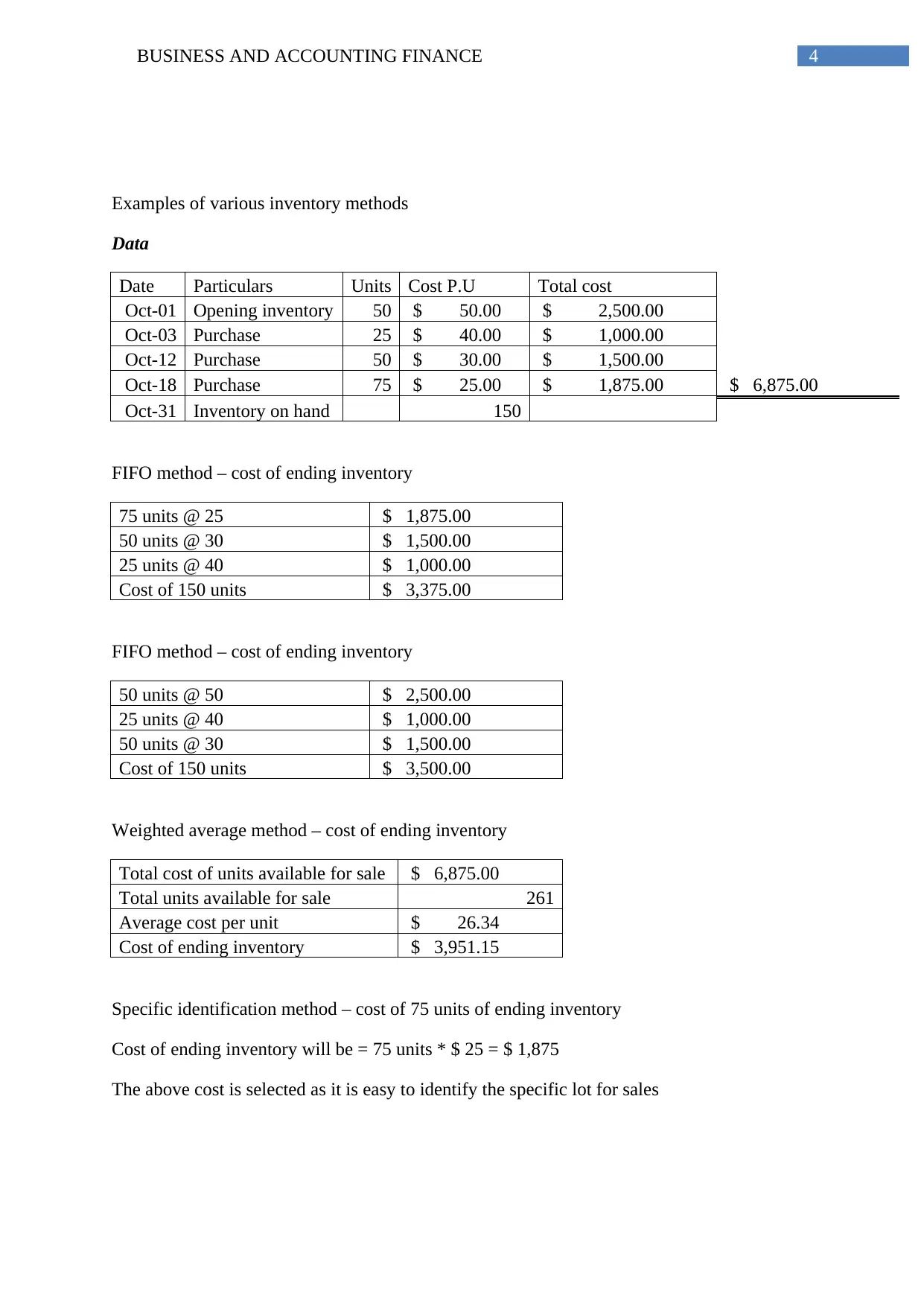
4BUSINESS AND ACCOUNTING FINANCE
Examples of various inventory methods
Data
Date Particulars Units Cost P.U Total cost
Oct-01 Opening inventory 50 $ 50.00 $ 2,500.00
Oct-03 Purchase 25 $ 40.00 $ 1,000.00
Oct-12 Purchase 50 $ 30.00 $ 1,500.00
Oct-18 Purchase 75 $ 25.00 $ 1,875.00 $ 6,875.00
Oct-31 Inventory on hand 150
FIFO method – cost of ending inventory
75 units @ 25 $ 1,875.00
50 units @ 30 $ 1,500.00
25 units @ 40 $ 1,000.00
Cost of 150 units $ 3,375.00
FIFO method – cost of ending inventory
50 units @ 50 $ 2,500.00
25 units @ 40 $ 1,000.00
50 units @ 30 $ 1,500.00
Cost of 150 units $ 3,500.00
Weighted average method – cost of ending inventory
Total cost of units available for sale $ 6,875.00
Total units available for sale 261
Average cost per unit $ 26.34
Cost of ending inventory $ 3,951.15
Specific identification method – cost of 75 units of ending inventory
Cost of ending inventory will be = 75 units * $ 25 = $ 1,875
The above cost is selected as it is easy to identify the specific lot for sales
Examples of various inventory methods
Data
Date Particulars Units Cost P.U Total cost
Oct-01 Opening inventory 50 $ 50.00 $ 2,500.00
Oct-03 Purchase 25 $ 40.00 $ 1,000.00
Oct-12 Purchase 50 $ 30.00 $ 1,500.00
Oct-18 Purchase 75 $ 25.00 $ 1,875.00 $ 6,875.00
Oct-31 Inventory on hand 150
FIFO method – cost of ending inventory
75 units @ 25 $ 1,875.00
50 units @ 30 $ 1,500.00
25 units @ 40 $ 1,000.00
Cost of 150 units $ 3,375.00
FIFO method – cost of ending inventory
50 units @ 50 $ 2,500.00
25 units @ 40 $ 1,000.00
50 units @ 30 $ 1,500.00
Cost of 150 units $ 3,500.00
Weighted average method – cost of ending inventory
Total cost of units available for sale $ 6,875.00
Total units available for sale 261
Average cost per unit $ 26.34
Cost of ending inventory $ 3,951.15
Specific identification method – cost of 75 units of ending inventory
Cost of ending inventory will be = 75 units * $ 25 = $ 1,875
The above cost is selected as it is easy to identify the specific lot for sales
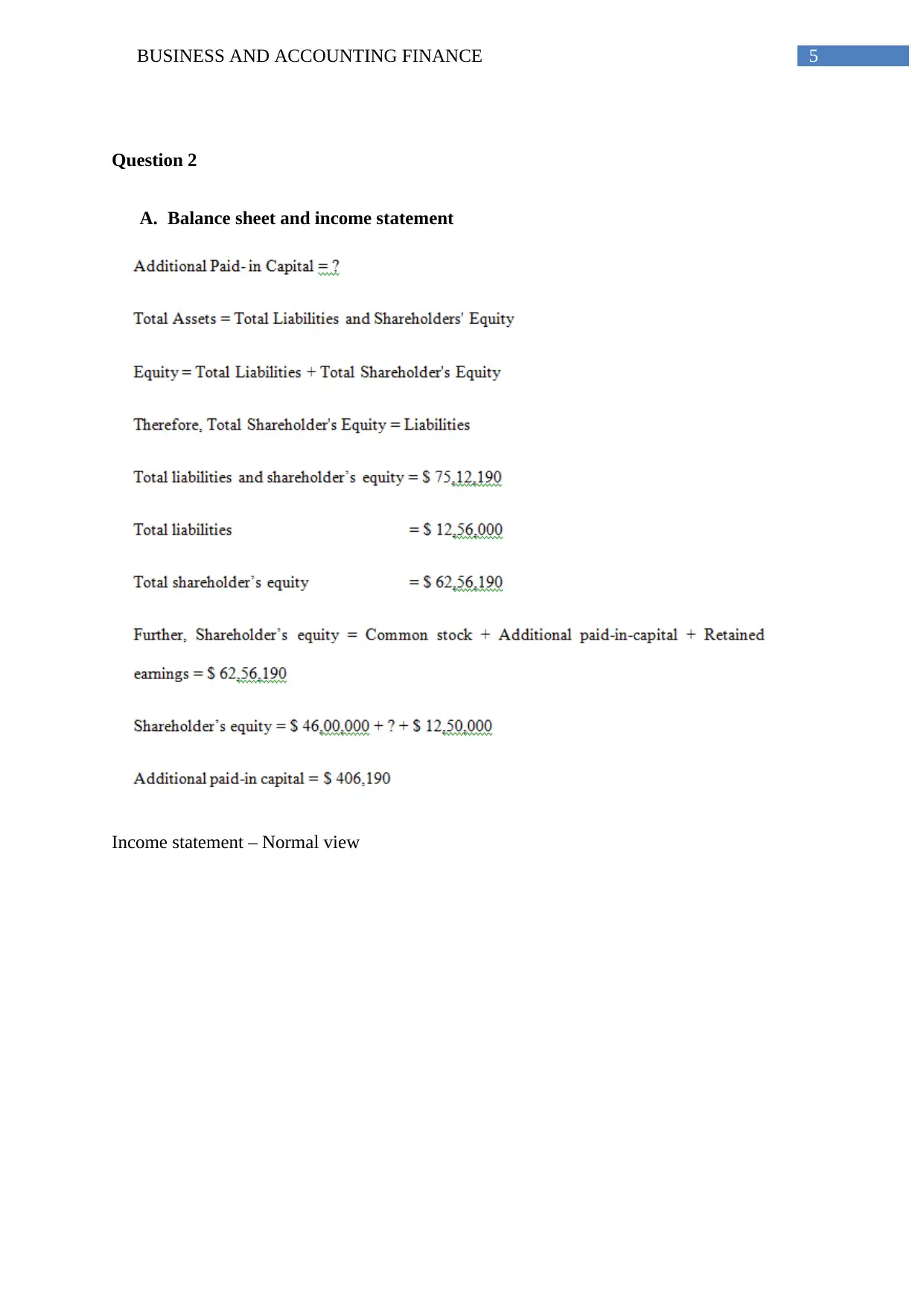
5BUSINESS AND ACCOUNTING FINANCE
Question 2
A. Balance sheet and income statement
Income statement – Normal view
Question 2
A. Balance sheet and income statement
Income statement – Normal view
⊘ This is a preview!⊘
Do you want full access?
Subscribe today to unlock all pages.

Trusted by 1+ million students worldwide
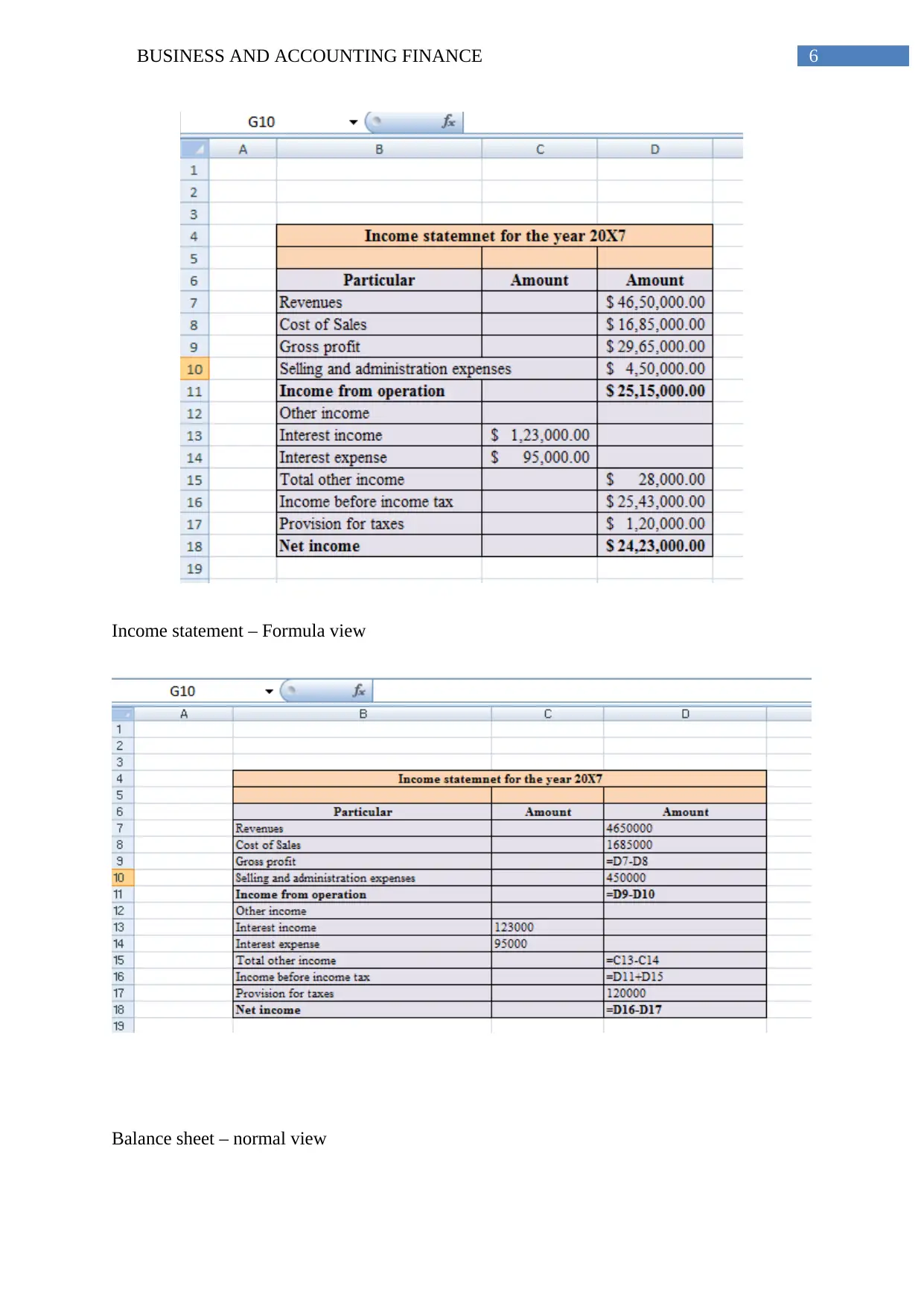
6BUSINESS AND ACCOUNTING FINANCE
Income statement – Formula view
Balance sheet – normal view
Income statement – Formula view
Balance sheet – normal view
Paraphrase This Document
Need a fresh take? Get an instant paraphrase of this document with our AI Paraphraser
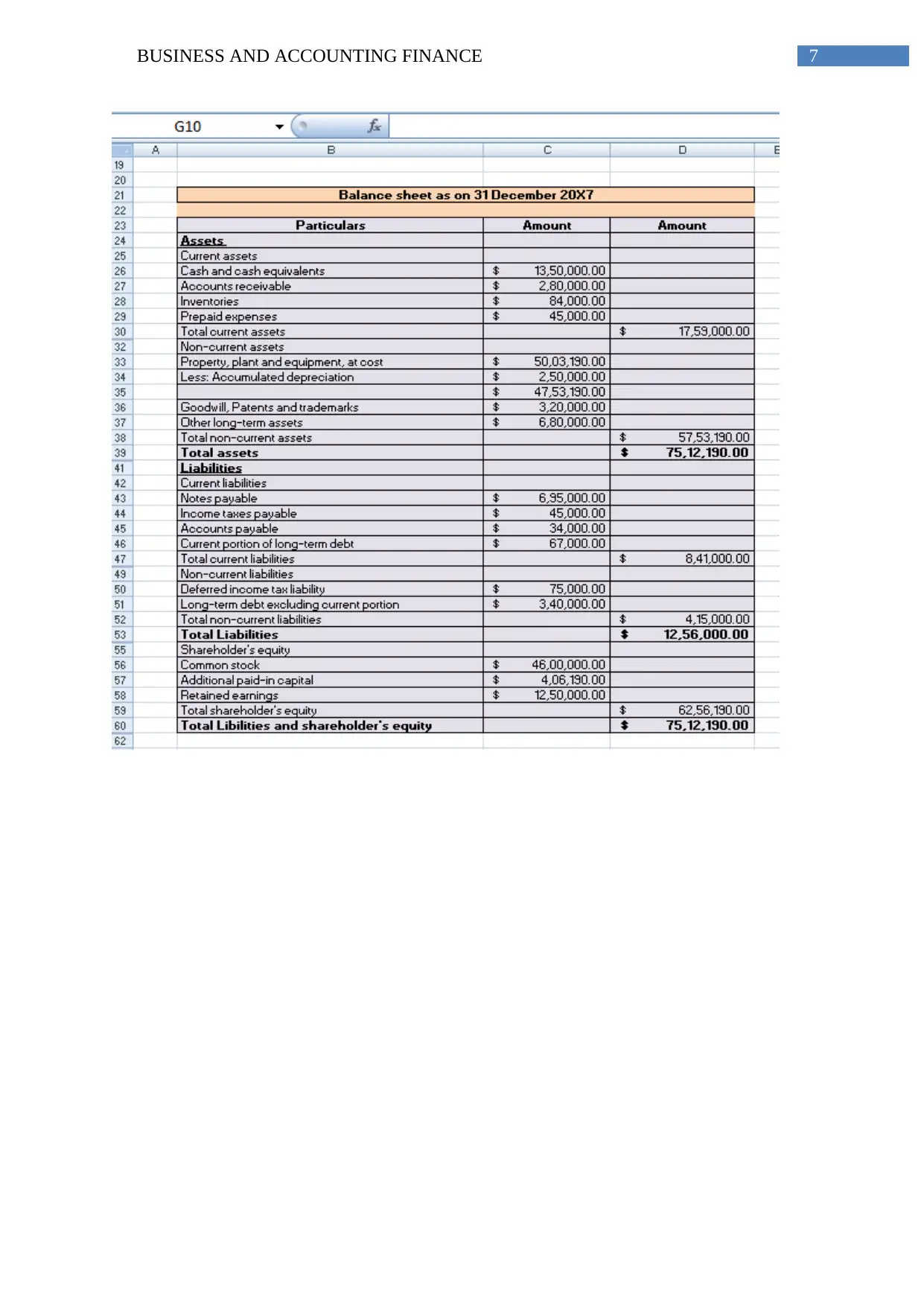
7BUSINESS AND ACCOUNTING FINANCE
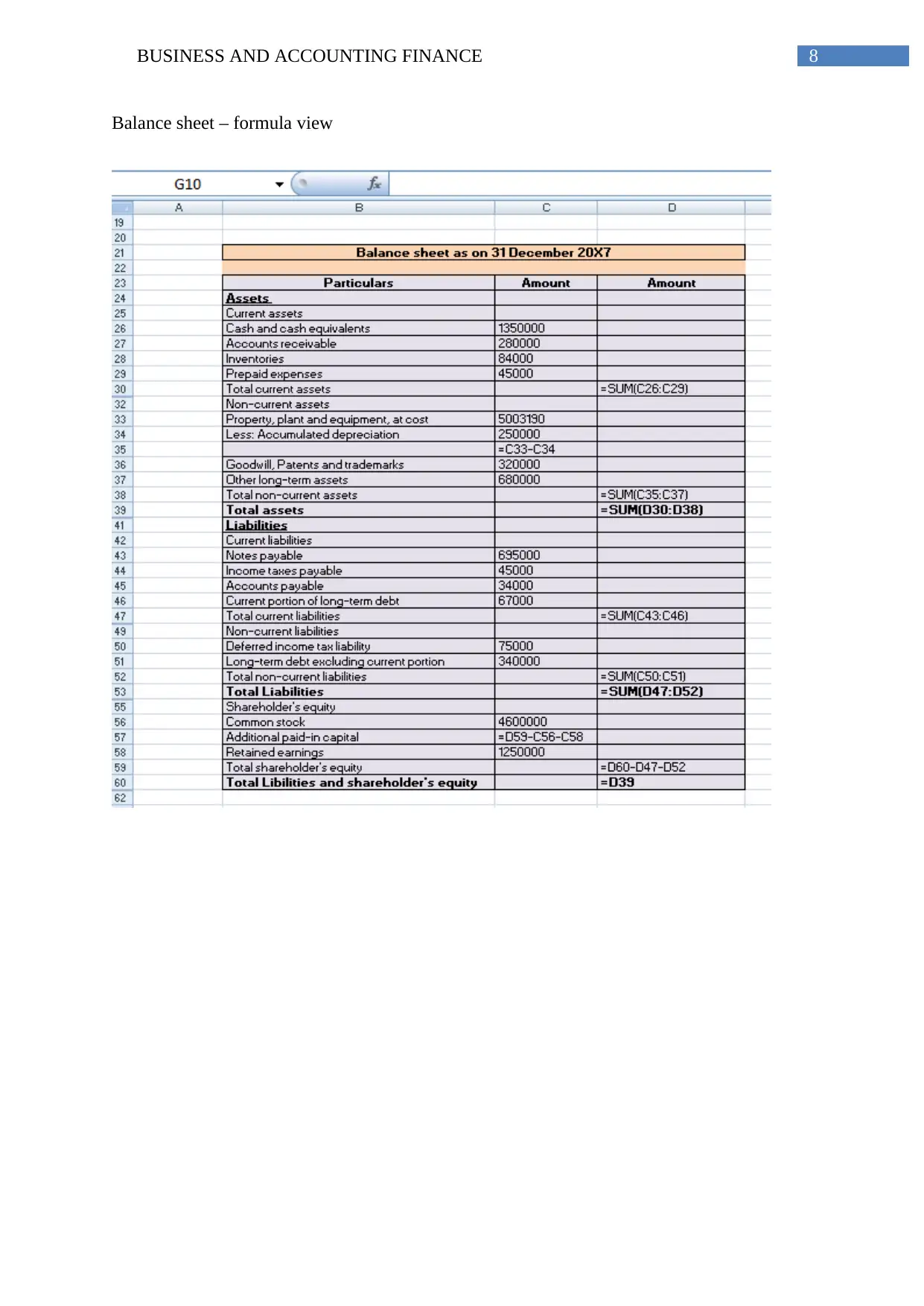
8BUSINESS AND ACCOUNTING FINANCE
Balance sheet – formula view
Balance sheet – formula view
⊘ This is a preview!⊘
Do you want full access?
Subscribe today to unlock all pages.

Trusted by 1+ million students worldwide
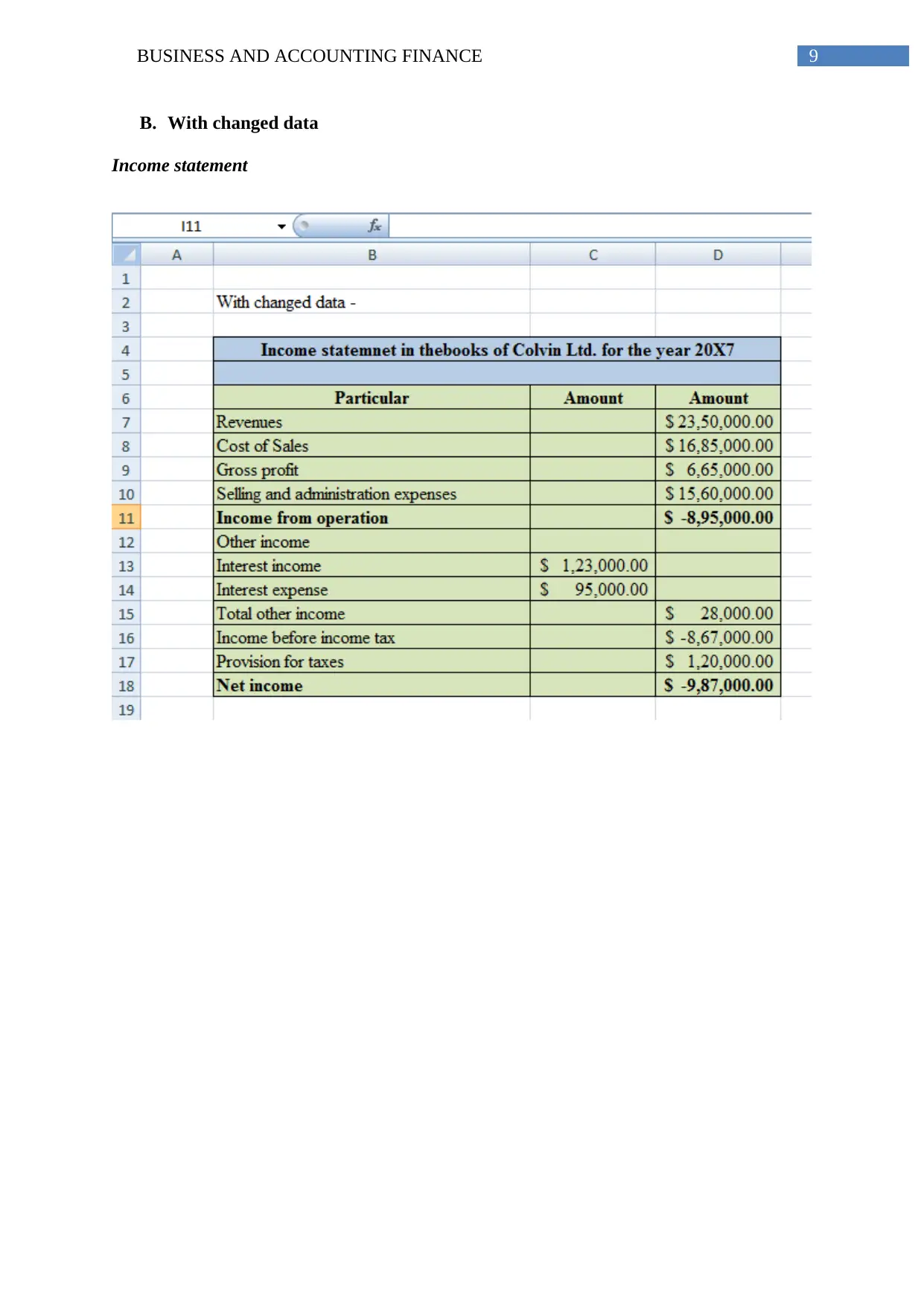
9BUSINESS AND ACCOUNTING FINANCE
B. With changed data
Income statement
B. With changed data
Income statement
Paraphrase This Document
Need a fresh take? Get an instant paraphrase of this document with our AI Paraphraser
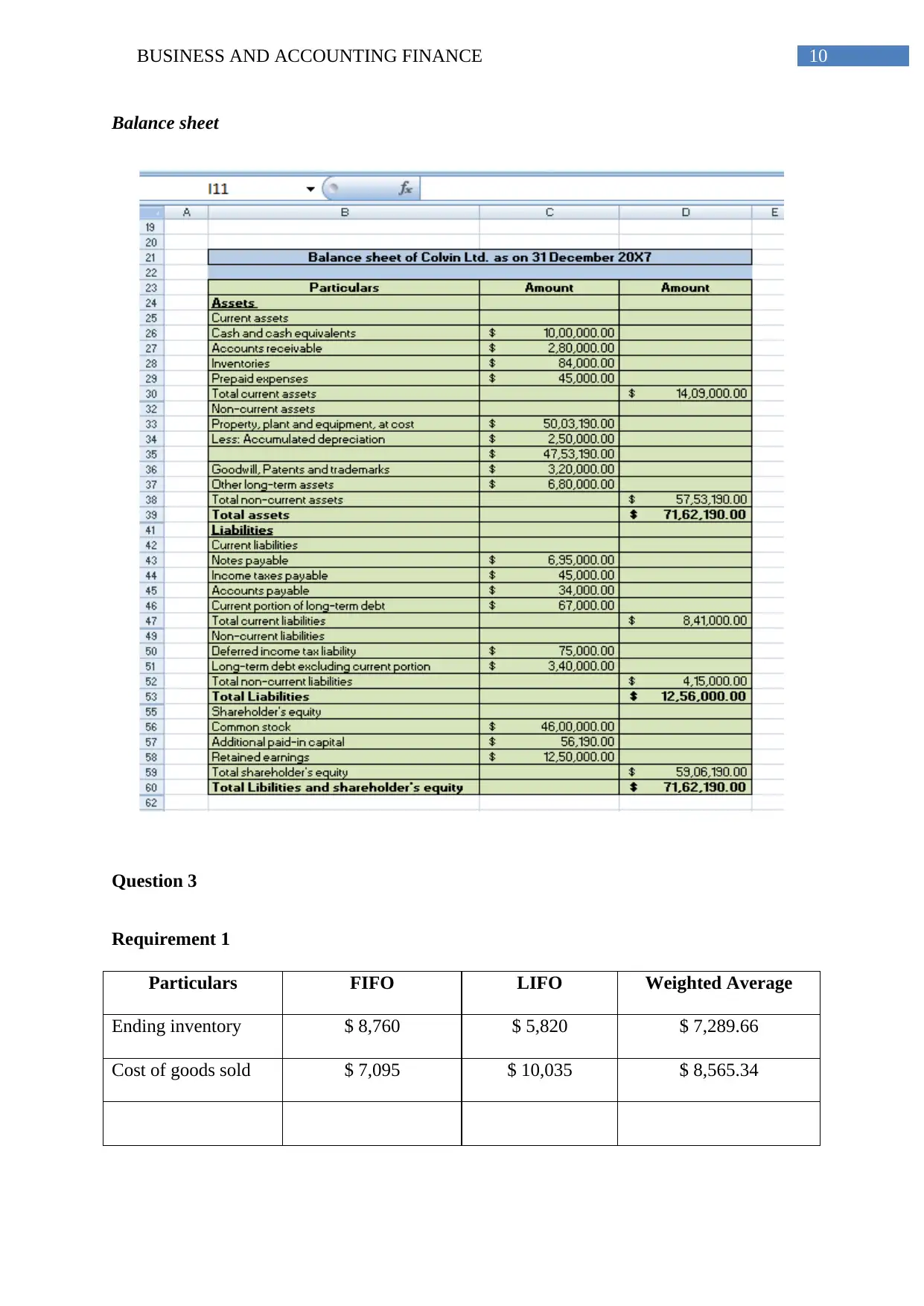
10BUSINESS AND ACCOUNTING FINANCE
Balance sheet
Question 3
Requirement 1
Particulars FIFO LIFO Weighted Average
Ending inventory $ 8,760 $ 5,820 $ 7,289.66
Cost of goods sold $ 7,095 $ 10,035 $ 8,565.34
Balance sheet
Question 3
Requirement 1
Particulars FIFO LIFO Weighted Average
Ending inventory $ 8,760 $ 5,820 $ 7,289.66
Cost of goods sold $ 7,095 $ 10,035 $ 8,565.34
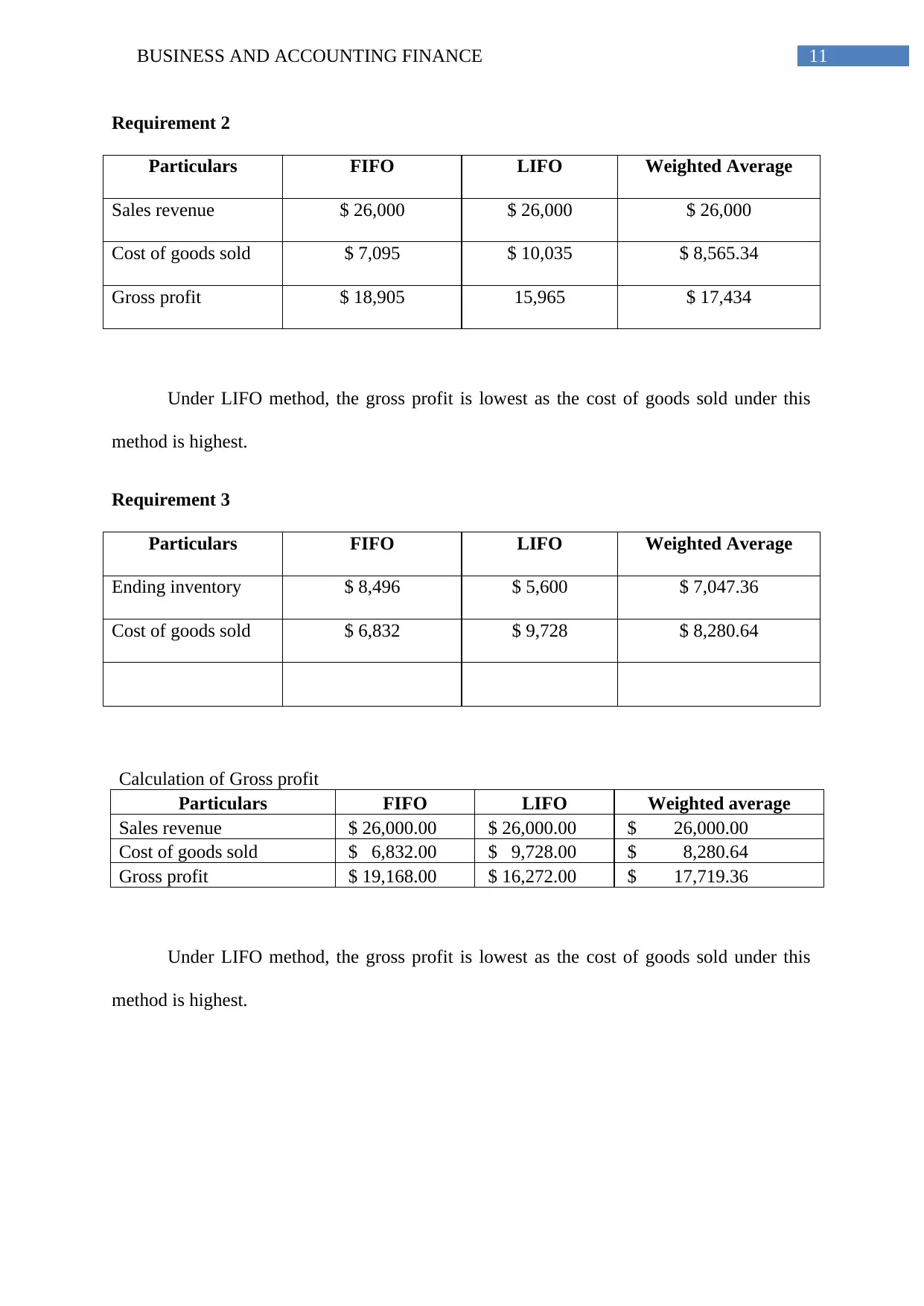
11BUSINESS AND ACCOUNTING FINANCE
Requirement 2
Particulars FIFO LIFO Weighted Average
Sales revenue $ 26,000 $ 26,000 $ 26,000
Cost of goods sold $ 7,095 $ 10,035 $ 8,565.34
Gross profit $ 18,905 15,965 $ 17,434
Under LIFO method, the gross profit is lowest as the cost of goods sold under this
method is highest.
Requirement 3
Particulars FIFO LIFO Weighted Average
Ending inventory $ 8,496 $ 5,600 $ 7,047.36
Cost of goods sold $ 6,832 $ 9,728 $ 8,280.64
Calculation of Gross profit
Particulars FIFO LIFO Weighted average
Sales revenue $ 26,000.00 $ 26,000.00 $ 26,000.00
Cost of goods sold $ 6,832.00 $ 9,728.00 $ 8,280.64
Gross profit $ 19,168.00 $ 16,272.00 $ 17,719.36
Under LIFO method, the gross profit is lowest as the cost of goods sold under this
method is highest.
Requirement 2
Particulars FIFO LIFO Weighted Average
Sales revenue $ 26,000 $ 26,000 $ 26,000
Cost of goods sold $ 7,095 $ 10,035 $ 8,565.34
Gross profit $ 18,905 15,965 $ 17,434
Under LIFO method, the gross profit is lowest as the cost of goods sold under this
method is highest.
Requirement 3
Particulars FIFO LIFO Weighted Average
Ending inventory $ 8,496 $ 5,600 $ 7,047.36
Cost of goods sold $ 6,832 $ 9,728 $ 8,280.64
Calculation of Gross profit
Particulars FIFO LIFO Weighted average
Sales revenue $ 26,000.00 $ 26,000.00 $ 26,000.00
Cost of goods sold $ 6,832.00 $ 9,728.00 $ 8,280.64
Gross profit $ 19,168.00 $ 16,272.00 $ 17,719.36
Under LIFO method, the gross profit is lowest as the cost of goods sold under this
method is highest.
⊘ This is a preview!⊘
Do you want full access?
Subscribe today to unlock all pages.

Trusted by 1+ million students worldwide
1 out of 19
Related Documents
Your All-in-One AI-Powered Toolkit for Academic Success.
+13062052269
info@desklib.com
Available 24*7 on WhatsApp / Email
![[object Object]](/_next/static/media/star-bottom.7253800d.svg)
Unlock your academic potential
Copyright © 2020–2025 A2Z Services. All Rights Reserved. Developed and managed by ZUCOL.




